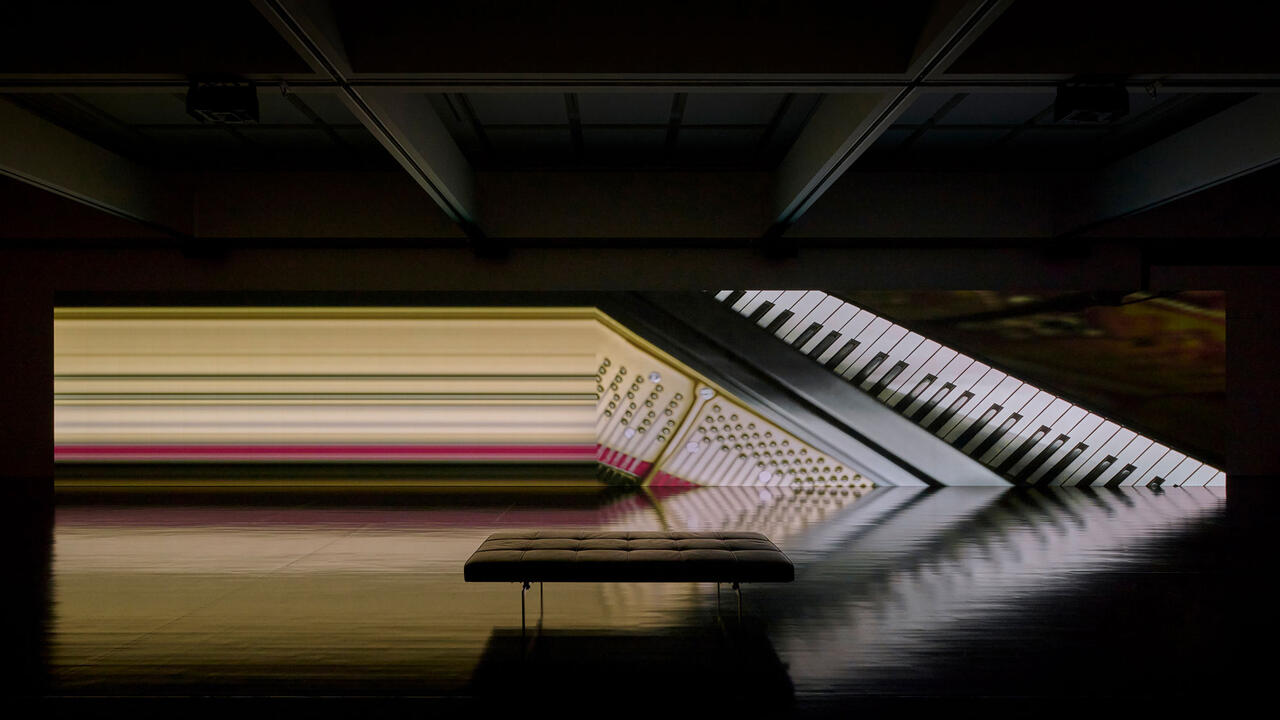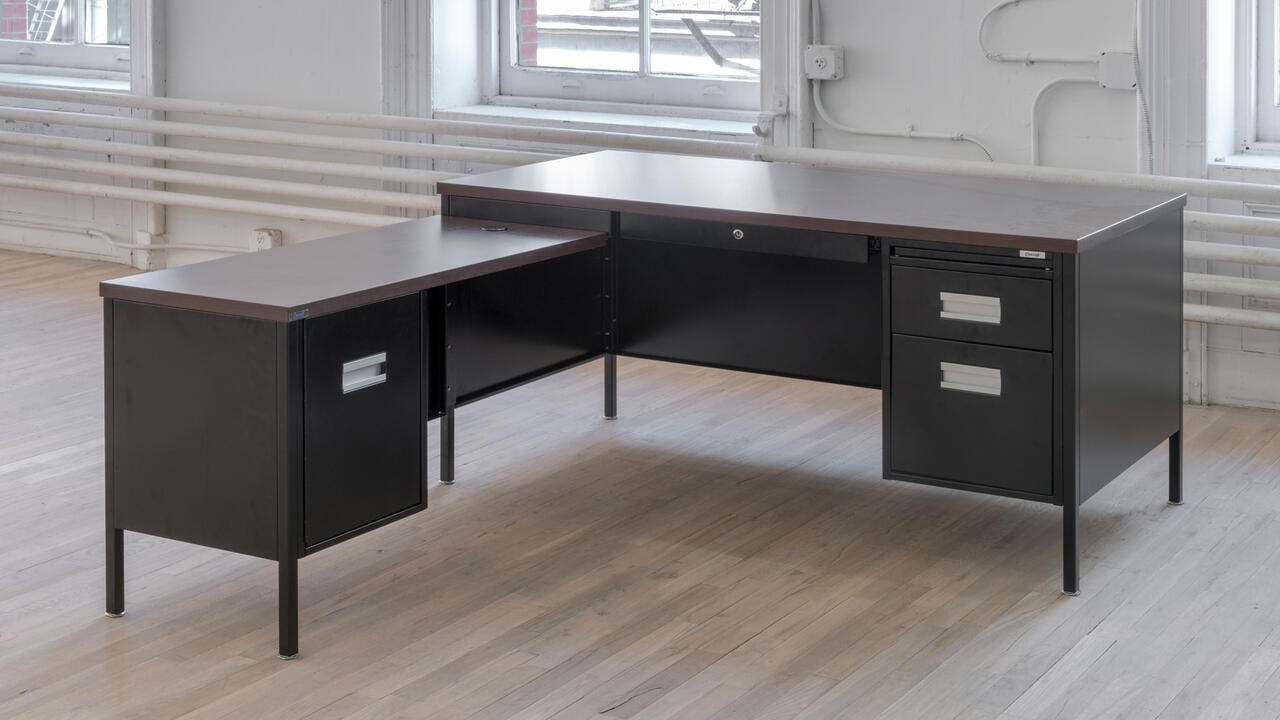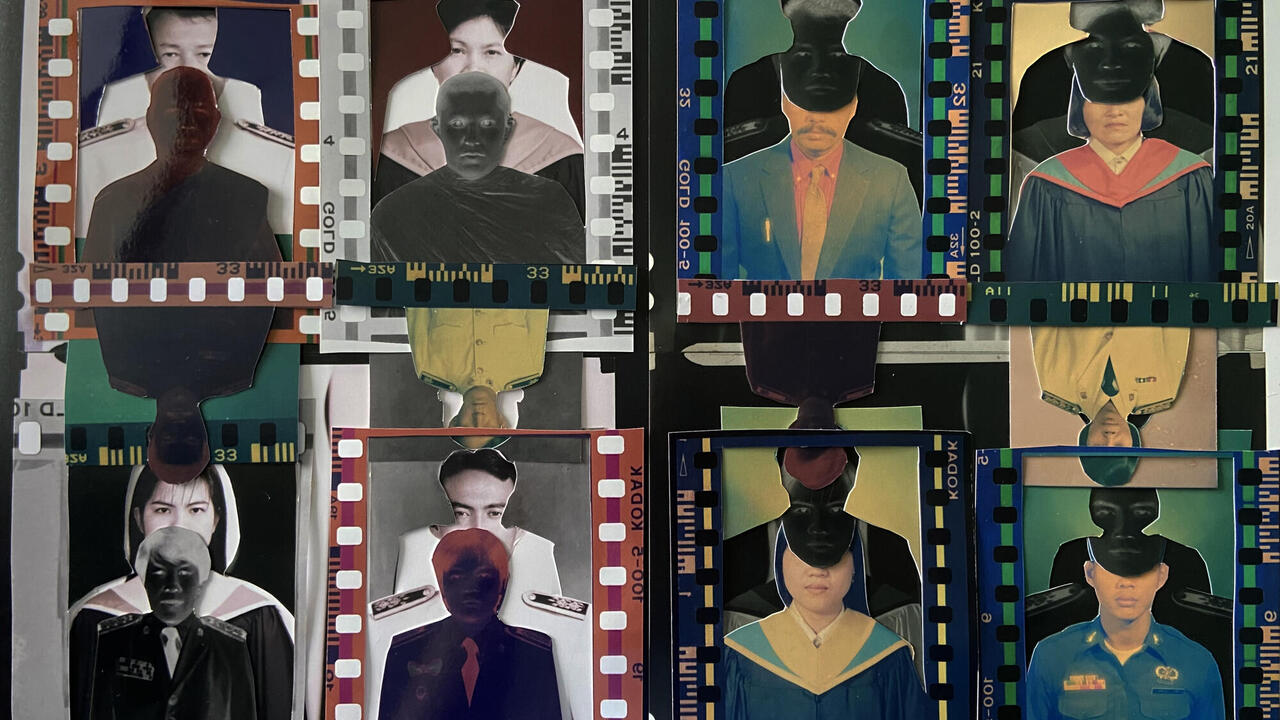What MoMA PS1’s ‘Theater of Operations’ Can Teach Us About the Killing of Qasem Soleimani
Or, why the Gulf conflicts never really went away
Or, why the Gulf conflicts never really went away

In the first week of 2020, the killing of Iranian Major General Qasem Soleimani by American drone strikes dragged the Gulf Wars front and centre in US consciousness once again, with the prospect of military engagement dominating headlines. It located MoMA PS1’s current show, ‘Theater of Operations: The Gulf Wars 1991–2011’, firmly in prequel status – not that the exhibition, which has been up since November, needed the added publicity. The exhibition itself is again making headlines, as nearly 40 participating artists have sent a letter to the MoMA and PS1 directors Glenn Lowry and Kate Fowle protesting investments by MoMA trustees, specifically Larry Fink’s investment in private prison companies and Apollo Global Management’s ownership of Constellis, formerly known as Blackwater. Leon Black, who sits on MoMA’s board, co-founded the private equity firm Apollo.
These two events – Soleimani and the outcry over toxic investments – are intertwined, each symptomatic of contemporary reactions to foreign policy in which the burden of responsibility has moved from the state and institution to the individual. Arguably, it’s the story sketched out by MoMA’s exhibition itself. What would a 2011–2020 chapter of the show look like?
Focusing on the American-led invasions of Iraq, ‘Theater of Operations’ nearly follows the official Gulf War timeline, which began in 1990 and formally ended with the withdrawal of US combat troops in December 2011. In reality, however, engagement continued, with US military personnel remaining to train Iraqi security forces and combat troops returning to the region with the resurgence of the Islamic State in 2014. Private military contractors, mostly staffed by former servicemen, were also in Iraq throughout its civil war (2014–17). The potential conflict stirred up by the Soleimani drone strike isn’t a new book; it’s another chapter – hopefully the last – in a long-running story.

Curated by Peter Eleey and Ruba Katrib, ‘Theater of Operations’ is organized into three main sections: the invasion of 1990–91; the embargo years, when Iraq was isolated and impoverished by US-led sanctions; and the 2003–04 conflict, including the human-rights violations committed by the US military against detainees at Iraq’s Abu Ghraib prison, a key flashpoint for Western artists. The show takes in painting and sculpture, mostly by Arab artists, and political responses by Western artists, mainly in tech idioms.
One of Katrib and Eleey’s key insights is that the wars coincided with changes in technology which affected artistic and popular culture. The 1990s saw the rise of cable news, which made the war prime-time television in America and created the sense of unreality and dislocation that fuelled critiques such as French philosopher Jean Baudrillard’s series of essays, The Gulf War Did Not Take Place (1991). By the time of the 2003–04 conflict, the rise of the internet had (ostensibly) collapsed the distance between the Middle East and the West, with servicemen sharing videos online of the fighting and time spent in base camps.
This focus on technology unwittingly turns the show into one of two halves: Iraqi and Western, divided not by geography or politics but by access to resources. A lot of the work on the Western side is slick, mediated and sprawling; that made by Iraqis and other Arabs – whether in situ or in the diaspora community – craft-oriented, intimate and tactile. The curatorial decision to focus on dafatir, the artists’ books produced by many Iraqi artists during the embargo years, deepens the contrast between craft and tech.

To choose two extremes: while Nuha Al-Radi was making sculptures out of stone and discarded car parts in Baghdad following the first invasion, someone in Los Angeles was coding a homemade game called ‘Bomb Iraq’ on an old computer that the artist Cory Arcangel found years later in a charity shop. He presents it as a found object in Bomb Iraq (2005), an installation on an Apple IIGS computer that visitors are invited to play. Aside from the moral questions raised (and, arguably, left unanswered) by the game and Arcangel’s ironic appropriation, the work also underlines the resources US artists have at their disposal: not many artists in a warzone could dedicate a spare computer to use for a single artwork. Thomas Hirschhorn’s monumental Hotel Democracy (2003) – a series of vignettes displaying global struggles for democracy mediated through press imagery – suddenly seems extravagant, despite his packing-tape aesthetic of cheap materials. Based on American motel architecture, the two-storey structure dominates the gallery, although it is not clear what that scale achieves.
To hazard a broad generalisation: compared to the kind of work made in the Arab region, technologically focused art has been an overwhelmingly Western discipline, with techno-fetishism and insularity preventing such practices from crossing over into the idioms and mindscapes of the Global South. Since at least 2011, however, this has begun to shift. Last year, for instance, Digital Earth – an international knowledge-exchange network of artists and scholars – held talks at Jameel Arts Centre in Dubai and Ashkal Alwan in Beirut, amongst other locations, which interrogated how data analysis, AI and new technologies can be flexed to answer explicitly global concerns. And a number of Arab artists, such as Sophia Al-Maria, Monira Al Qadiri and Larissa Sansour, are using techno-futurist idioms to reflect conflicts and tensions in the region. This shift is intimated in the most contemporary works of the show, and if the exhibition were to be stretched forward to consider artistic responses up until the Soleimani killing (and whatever comes next), I’d like to think that more of this decolonization of technology might continue.

Moreover, just as the Gulf and Iraq wars shed light on new roles of media technology in society, the assassination of Soleimani speaks volumes about 2020. If CNN was the media star of the first Gulf conflict, acknowledged in ‘Theater of Operations’ by Hirschhorn’s enormous gold pendant (Necklace CNN, 2002), today’s equivalents are the vast data resources of entities such as Facebook and Cambridge Analytica, which enable the promotion of populism and the interference of foreign powers in overseas elections. These incidents fit into the larger shift of power away from nation-states that impacts current art world behaviour and which has crippled Iraq. Since 1648, sovereignty in the West has been contingent with national borders – a rationale extended to the Arab region in the Sykes-Picot agreement, which carved up the Middle East after the fall of the Ottoman Empire. Yet, in recent years, increased interpersonal connections, transnational communications and tariff-free trade, coupled with governments ceding power and pooling decision-making capabilities, has prompted debate as to whether nations have lost sovereignty over their citizens. This has been extreme in Iraq, and is exemplified by the figure of Soleimani, who operated with impunity there, as well as in Lebanon, to install the Iranian presence via Shi’ite militias. Much of Iraq is now a proxy battleground between Iranian and US interests.

I would also argue that the art world’s current tendency to self-police is relevant here – as the slow-building crisis around 'Theater of Operations' makes clear. The issue is in two parts. Phil Collins and Michael Rakowitz initially pulled and paused their videos, respectively, from the show to demand that BlackRock, run by Fink, who is on the MoMA board, divest from private prison companies GEO Group and CoreCivic. A letter signed by 37 artists and sent to MoMA and PS1 top brass on 9 January also calls attention to the relationship between MoMA trustee Black, whose Apollo Management Group owns the private defense company Constellis Holdings, formerly known as Blackwater. Private contractors are notorious for operating outside of the code of conduct that governs military engagements; Blackwater was involved in a number of scandals throughout its tenure in Iraq, including the 2007 Nisour Square Massacre, in which 14 Iraqi civilians were killed. Here, the pushback against Black's involvement with them – and by extension, the artists’ own involvement – is part of an attempt to posit a moral ground that is no longer guaranteed by state policy. It’s a consequence of a governmental moral vacuum that leaves individuals fighting foreign-policy and civil-rights battles on their own terms.
Instead of making protest work, artists are now protesting. They are responding to the infrastructural ties between the realm of culture and those of conflict – whether military, financial or ecological. Seen through this prism, Collins’s and Rakowitz’s gestures of protest could be considered not only instances of activism, but exemplary contributions to a 2020 show about US engagement in Iraq.
It feels strange to be optimistic, but the exhibition charts the progression in artistic discourse towards ever more sophistication about art’s ties to the realities of military engagements. I'm not denying any contradictions and limitations in contemporary cancel culture, but chinks in the armour are needed. However Eleey and Katrib choose to populate their follow-up show, ‘Chapter III: the 2019–20 Persian Gulf Crisis’, as Wikipedia termed it within days, it will be less containable in the museum.
‘Theater of Operations: The Gulf Wars 1991–2011’ runs at MoMA PS1, New York, until 1 March 2020.
This article appeared in frieze issue 209 with the headline ‘Forever Wars’.
Main Image: Michel Auder, Gulf War TV War, 1991 (edited 2017), film still. Courtesy: the artist and Martos Gallery, New York





















